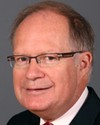Thank you, Mr. Chair.
Gentlemen, Canadian Press has just put out a story. It deals with a study obtained under access to information entitled:
“Internal DND audit uncovers more red flags in other aircraft purchases.”
It refers to search and rescue aircraft.
According to the report, the Chief of Review Services conducted an internal audit at the Department of National Defence. He allegedly discovered a lack of oversight and that follow-up on risk assessments was not sufficiently documented.
He added that:
The Forces' own internal auditor warns it was on the same shaky ground as the helicopters. Within each phase of DND risk management methodology, certain risk management practices were not in place in the project office.
That concerns me. The Auditor General just said that about the helicopters. Now we are talking about your own internal audit. Your
chief of review services
says that it is on the same ground as the search and rescue helicopters. I need some reassurance about the F-35 project.
What is the problem at the department? Is the program manager changing too often? Colonel Burt is the program manager and appears to have held the position for some time. That is already reassuring. Explain to us why there are not better safeguards especially for projects of this scope. We are talking about billions of dollars. This afternoon, we learned that the program
search and rescue, fixed wing search and rescue,
is in a situation similar to that of the helicopters. We are talking about a $16 billion project here. You understand that, as those who protect taxpayers, we need to be reassured. What is your opinion of what your chief of
review service
disclosed this afternoon? Give us some reassurances about the F-35 program.






